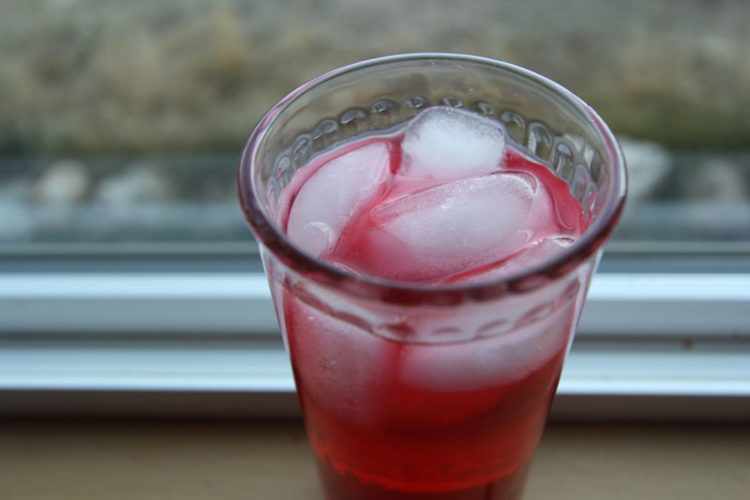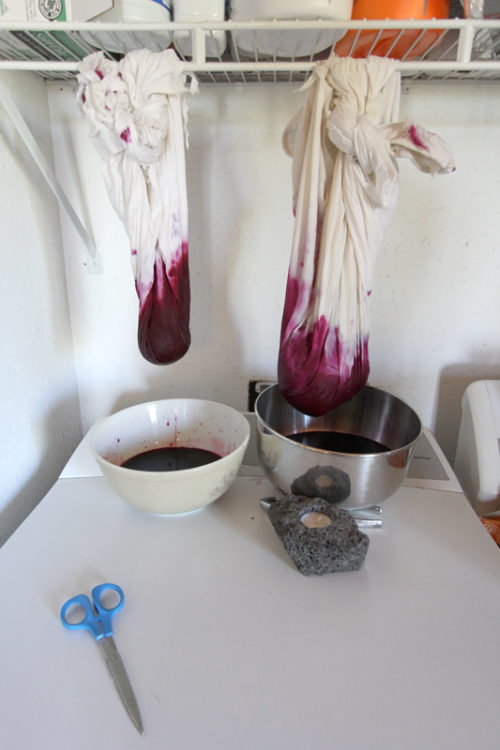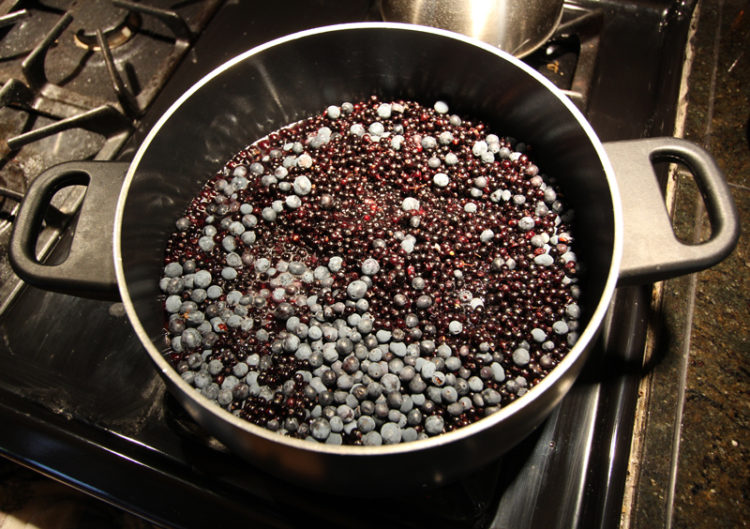

Berry season has been good this year in Colorado’s high country. I’ve been cooking down all manner of wild berries—black currants and gooseberries, Oregon grapes, and black elderberries from Denver-area landscaping—and straining out the juice through a makeshift setup of cut, water-soaked squares of bed sheet. These juices can now be simmered with additional sugar to make syrups, combined with pectin for jellies, frozen as juice concentrate, or mixed with herbal teas and chilled for a complex, refreshing beverage.
Fruity Vinegars
After playing with the idea a bit last year, it is now regular practice in my household to use the fruit mash that remains after the juice is strained out to flavor vinegar. Although live-cultured vinegars can also be made by fermenting fruit scraps, a very simple method of extending one’s harvest is to toss the leftover fruit scraps into white–or better yet, apple cider vinegar with live cultures–for an added flavor boost.
The simplest instructions for infusing vinegars say to fill a sterilized jar with fruits, berries, herbs, or other infusing agent and top them with warmed vinegar, then let them sit at room temperature out of the sunlight for a week to three weeks. Some recipes call for sterilizing the jars and lids, and some do not call for sterilizing anything, instead just washing in hot, soapy water. Some call for refrigerated storage and others for storing in a cool, dark place. There seems to be some flexibility in how you infuse vinegars—unlike oils, which carry the risk of botulism if prepared improperly with fresh ingredients, particularly garlic. Vinegar will often corrode metal jar tops, so I like to top them with a plastic lid for storage.
Fruity Vinegar Soda
The resulting fruit-infused vinegars are great strained and added to salad dressings and marinades, but we find they really shine splashed into sparkling water to make a tart soda. It may sound odd but think of it as akin to dressing ice water or club soda with a squeeze of lemon. My better half became addicted with the first fruity vinegar soda I handed him, and he now makes them an almost nightly ritual.
Thus I made sure this year’s berry processing yielded a good collection of fruity vinegars—among them black currant (Ribes laxiflorum) infused white vinegar and an ACV with black elderberry (Sambucus nigra) and Oregon grape (Mahonia repens). Ultimately the goal is to satisfy Gregg’s demand to have enough fruity vinegars in storage for a year’s worth of sodas, for which he adds 2-3 teaspoons of vinegar to each glass of soda water.

I enjoy my own sodas a bit sweeter than he does, so I usually use a wild syrup and just one spoonful of fruity vinegar. In the past I made sodas with sweet syrup alone, but the splash of vinegar adds a nice pop. Lately, an herbal vinegar made with wild tarragon has been tickling my fancy, both in cocktails and mocktails. I swear, the possibilities are endless.
I hope those of you who make wild jellies and juices will try upcycling your fruit mash into vinegars—or booze, if you like—to extend the harvest to additional culinary treats.
Updated 2.24.21

Leave a Reply